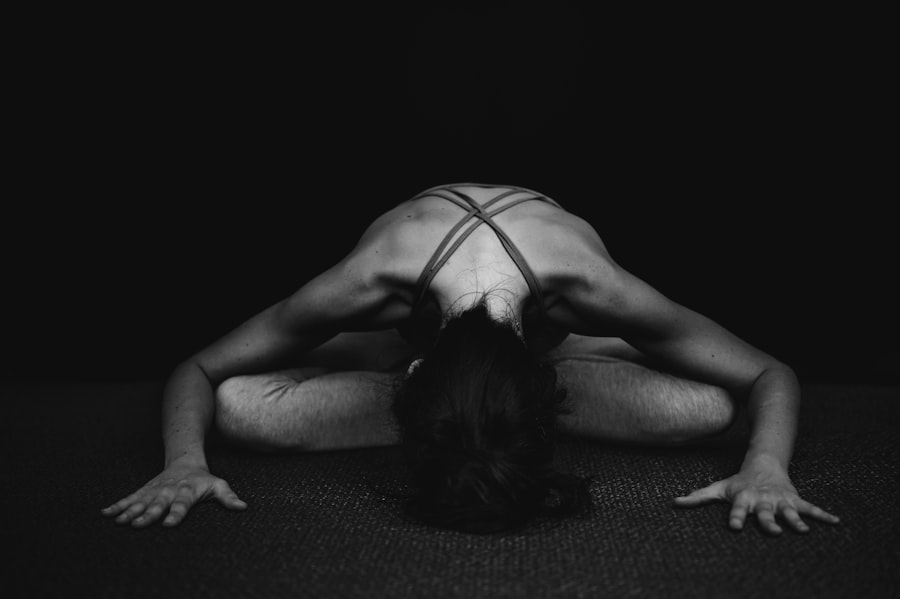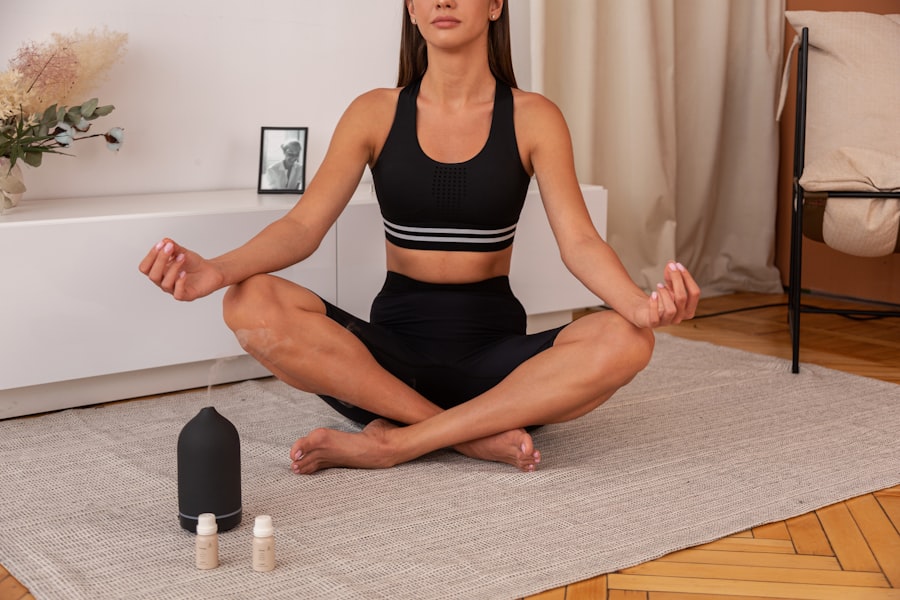Mindfulness is a mental practice that encourages individuals to focus their attention on the present moment, cultivating an awareness of thoughts, feelings, and bodily sensations without judgment. Originating from ancient Buddhist traditions, mindfulness has gained significant traction in modern psychology and wellness practices. It invites practitioners to observe their experiences as they unfold, fostering a deeper connection with themselves and their surroundings.
This practice is not merely about relaxation; it’s about engaging fully with life as it happens, allowing for a richer and more fulfilling existence. At its core, mindfulness is about being present. In a world filled with distractions—be it the constant ping of notifications or the relentless pace of daily life—mindfulness serves as an anchor.
It encourages individuals to step back from the chaos and observe their thoughts and feelings with curiosity rather than criticism. This shift in perspective can lead to profound changes in how one interacts with the world, promoting emotional resilience and a greater sense of well-being.
Key Takeaways
- Mindfulness is the practice of being fully present and aware of the current moment without judgment.
- Benefits of mindfulness include reduced stress, improved focus, better emotional regulation, and enhanced overall well-being.
- Mindfulness techniques for daily peace include mindful breathing, body scan meditation, mindful eating, and mindful walking.
- Mindful breathing involves focusing on the breath to bring attention to the present moment and calm the mind.
- Body scan meditation involves systematically focusing on different parts of the body to bring awareness and relaxation.
Benefits of Mindfulness
The benefits of mindfulness are extensive and well-documented, spanning physical, emotional, and psychological domains. Research has shown that practicing mindfulness can lead to reduced stress levels, improved focus, and enhanced emotional regulation. A study published in the journal “Psychological Science” found that individuals who practiced mindfulness reported lower levels of anxiety and depression, highlighting its potential as a powerful tool for mental health management.
Furthermore, mindfulness has been linked to improved cognitive function, allowing individuals to think more clearly and make better decisions. In addition to mental health benefits, mindfulness can also have a positive impact on physical health. Regular mindfulness practice has been associated with lower blood pressure, improved sleep quality, and even enhanced immune function.
According to a report from the American Psychological Association, mindfulness can help reduce chronic pain and improve overall quality of life for those suffering from various health conditions. By fostering a greater awareness of bodily sensations and stress responses, individuals can learn to manage their physical health more effectively.
Mindfulness Techniques for Daily Peace

Incorporating mindfulness into daily life doesn’t require extensive training or hours of meditation. There are numerous techniques that can be easily integrated into everyday routines, allowing individuals to cultivate a sense of peace and presence throughout their day. One effective approach is to start small—dedicating just a few minutes each day to mindfulness practice can yield significant benefits over time.
Whether it’s through mindful breathing, body scan meditation, or simply taking a moment to appreciate one’s surroundings, these techniques can help ground individuals in the present moment. Another key aspect of practicing mindfulness is consistency. Establishing a regular routine can enhance the effectiveness of mindfulness techniques.
For instance, setting aside time each morning for mindful meditation or incorporating mindful moments throughout the day—such as during meals or while walking—can create a more profound sense of awareness and tranquility. The goal is not perfection but rather progress; even small steps toward mindfulness can lead to meaningful changes in one’s overall well-being.
Mindful Breathing
| Technique | Duration | Effect |
|---|---|---|
| 4-7-8 Breathing | 4-7-8 seconds | Calms the nervous system |
| Box Breathing | 4-4-4-4 seconds | Reduces stress and anxiety |
| Deep Breathing | 5-7 seconds | Increases oxygen flow to the brain |
Mindful breathing is one of the simplest yet most powerful techniques for cultivating mindfulness. It involves focusing attention on the breath—observing the natural rhythm of inhalation and exhalation without trying to change it. This practice can be done anywhere and at any time, making it an accessible tool for managing stress and enhancing focus.
By directing attention to the breath, individuals can create a sense of calm and clarity amidst the chaos of daily life. To practice mindful breathing, find a comfortable position—whether sitting or standing—and close your eyes if it feels comfortable. Take a deep breath in through your nose, allowing your abdomen to expand fully.
Hold for a moment before exhaling slowly through your mouth. As you breathe, pay attention to the sensations in your body—the rise and fall of your chest, the coolness of the air entering your nostrils, and the warmth as you exhale. If your mind begins to wander, gently guide your focus back to your breath without judgment.
This simple practice can be a powerful tool for grounding oneself in the present moment.
Body Scan Meditation
Body scan meditation is another effective mindfulness technique that encourages individuals to develop a deeper awareness of their physical sensations. This practice involves mentally scanning the body from head to toe, paying attention to areas of tension or discomfort while fostering a sense of relaxation and acceptance. By tuning into bodily sensations, individuals can cultivate a greater understanding of their physical state and learn to release tension that may be held unconsciously.
To begin a body scan meditation, find a quiet space where you can lie down comfortably. Close your eyes and take a few deep breaths to center yourself. Start by bringing your attention to the top of your head, noticing any sensations or feelings present there.
Gradually move your focus down through your body—your forehead, eyes, jaw, neck—taking note of any areas that feel tense or relaxed. Continue this process all the way down to your toes, allowing yourself to fully experience each sensation without judgment.
Mindful Eating

The Benefits of Mindful Eating
This practice can lead to healthier eating habits and a more positive relationship with food. By being more mindful of our eating, we can develop a greater appreciation for the food we eat and make more conscious choices about our diet.
Practicing Mindful Eating
To practice mindful eating, start by eliminating distractions during meals. Turn off screens, put away your phone, and take a moment to appreciate the food on your plate before taking the first bite. Notice the colors, shapes, and smells of the food before you begin eating.
Being Present During Meals
As you take each bite, chew slowly and savor the flavors. Pay attention to how the food feels in your mouth and how it nourishes your body. By being present during meals, individuals can cultivate gratitude for their food while also making more conscious choices about what they eat.
Mindful Walking
Mindful walking is another technique that allows individuals to incorporate mindfulness into their daily routines while engaging in physical activity. This practice transforms an ordinary walk into an opportunity for reflection and awareness. By focusing on the sensations of walking—the feeling of feet touching the ground, the rhythm of breath, and the sights and sounds of the environment—individuals can cultivate a sense of presence that enhances both mental clarity and emotional well-being.
To practice mindful walking, find a quiet space where you can walk without distractions—this could be indoors or outdoors. Begin by standing still for a moment, taking a few deep breaths to center yourself. As you start walking slowly, pay attention to each step—the lifting of your foot, the movement through the air, and the gentle contact with the ground.
Notice how your body feels as you walk; observe any thoughts that arise without judgment and gently bring your focus back to the act of walking. This practice not only promotes mindfulness but also encourages physical activity as a form of self-care.
Incorporating Mindfulness into Daily Routine
Incorporating mindfulness into daily routines doesn’t have to be overwhelming; small changes can lead to significant improvements in overall well-being. One effective strategy is to set aside specific times during the day for mindfulness practices—whether it’s morning meditation or evening reflection before bed. Additionally, integrating mindful moments throughout daily activities—such as during commutes or household chores—can help reinforce mindfulness as a way of life.
Another approach is to create reminders for mindfulness throughout the day. This could involve setting alarms on your phone that prompt you to take a few deep breaths or engage in a brief moment of reflection. Journaling can also be an effective tool for cultivating mindfulness; taking time each day to write down thoughts or feelings can enhance self-awareness and promote emotional clarity.
Ultimately, the key is consistency; by making mindfulness a regular part of daily life, individuals can experience its transformative effects over time. In conclusion, mindfulness offers a wealth of benefits that extend beyond mere relaxation; it fosters emotional resilience, enhances physical health, and cultivates deeper connections with oneself and others. By exploring various techniques such as mindful breathing, body scan meditation, mindful eating, and mindful walking, individuals can find practices that resonate with them personally.
Incorporating these techniques into daily routines allows for greater presence in everyday life—a gift that enriches both personal well-being and relationships with others. And remember: Why did the kid bring a ladder to school?
Further Reading:
1. American Psychological Association – [Mindfulness](https://www.apa.org)
2. Psychological Science – [The Benefits of Mindfulness](https://www.psychologicalscience.org)
3.
Mindful.org – [Mindfulness Techniques](https://www.mindful.org)
Mindfulness techniques have become increasingly popular in recent years as a way to reduce stress and improve overall well-being. One related article that explores the benefits of mindfulness is “Nourish Your Mind, Body, and Spirit: Health and Wellness Gifts for a Balanced Life” from Wellness Wave News. This article discusses various tools and practices that can help individuals cultivate mindfulness in their daily lives, from meditation apps to essential oils. By incorporating these techniques into their routine, individuals can experience greater peace and clarity in their minds. To read more about this topic, check out the article here.
Health and Wellness Products Available Now!
FAQs
What are mindfulness techniques?
Mindfulness techniques are practices that help individuals focus their attention on the present moment, without judgment. These techniques can include meditation, deep breathing exercises, and body scans.
What are the benefits of practicing mindfulness techniques?
Practicing mindfulness techniques has been shown to reduce stress, improve focus and concentration, enhance self-awareness, and promote emotional regulation. It can also help with managing anxiety and depression.
How can mindfulness techniques be incorporated into daily life?
Mindfulness techniques can be incorporated into daily life by setting aside time for meditation or deep breathing exercises, practicing mindful eating, and engaging in activities with full awareness and presence.
Are there different types of mindfulness techniques?
Yes, there are various types of mindfulness techniques, including mindfulness meditation, body scan meditation, loving-kindness meditation, and mindful movement practices such as yoga and tai chi.
Can anyone practice mindfulness techniques?
Yes, anyone can practice mindfulness techniques. It does not require any special skills or abilities, and can be beneficial for people of all ages and backgrounds.